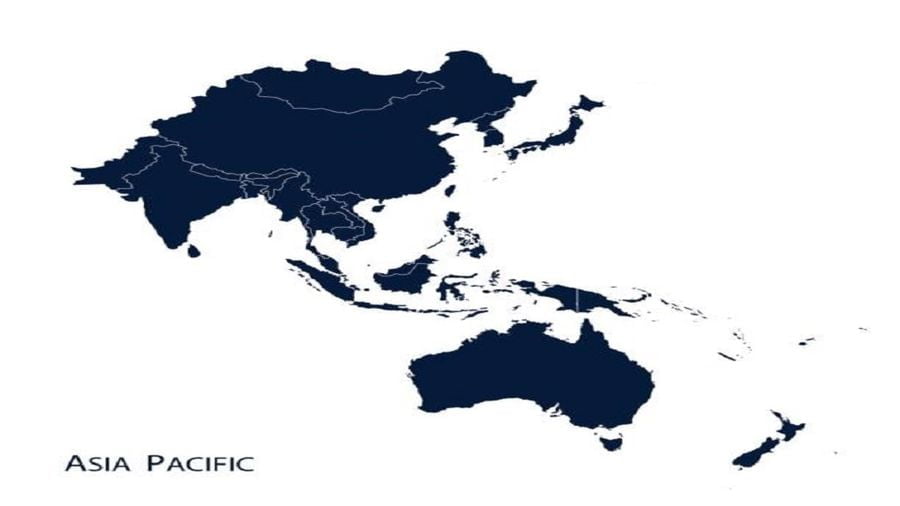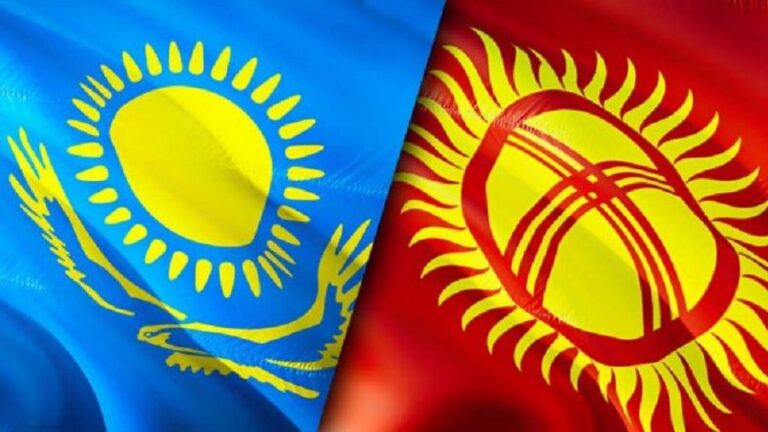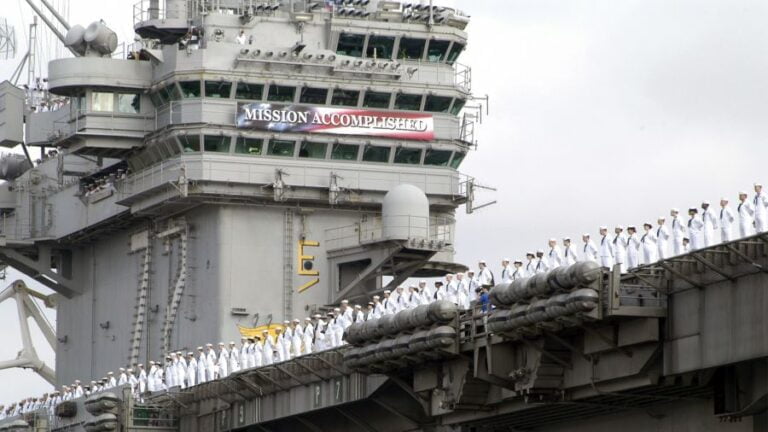How Have America’s Tensions with Russia Affected Its Reputation in Asia?
While the US’ fading unipolar hegemony over Western Eurasia largely remains assured at least for the time being, it mustn’t be taken for granted in Eastern Eurasia lest it suffer the same fate as what’s befalling it in West & South Asia vis-à-vis Israel & the GCC cultivating increasingly strategic ties with Russia & China while India realigned itself with its traditional Russian de facto ally. These multipolar processes might soon start reshaping Southeast Asia as well.
The Ukrainian Precedent
The undeclared US–provoked missile crisis in Europe, which has yet to trigger a Russian-Ukrainian War like Washington wrongly predicted would happen on Wednesday, has far-reaching consequences for America’s reputation in Asia. The country’s Indo-Pacific partners must be watching very closely how the US cut up and ran from Ukraine ahead of what many feared would be the false flag incident that some thought it would stage to initiate regional hostilities. Russian intelligence earlier warned that this could serve as the pretext for deploying strike weapons – including hypersonic missiles and perhaps even to Ukraine one day – to the region to gradually erode Russia’s nuclear second-strike capabilities. Instead of unwaveringly supporting Kiev, Washington and its allies withdrew all of their military forces and most of their diplomats in spite of Ukrainian officials condemning them for unnecessarily sowing panic.
The Afghan Fiasco
There have already been very real concerns about the veracity of America’s published intelligence reports and its reliability as an ally following last summer’s chaotic evacuation from Afghanistan. The Biden Administration confidently claimed at the time that Kabul wouldn’t fall to the Taliban for months after the withdrawal, only for that group to walk into it without firing a shot while international forces were still present. Even worse, America abandoned its local allies and even some of its fellow citizens. The Afghan National Army (ANA) also wasn’t able to defeat the terrorist–designated Taliban insurgency despite nearly two decades of training and approximately $83 billion worth of military assistance. All of this made America’s Indo-Pacific allies wary of whether they could count on it to “contain” China.
“Deep State” Divisions
None of them have any reasons for optimism after what just happened in Ukraine. For starters, the very fact that the US unexpectedly redirected its grand strategic focus from “containing” China to “containing” Russia – which was brought about by the anti-Russian faction of its permanent military, intelligence, and diplomatic bureaucracies (“deep state”) getting a one-up over their anti-Chinese rivals – suggested that it’s incapable of simultaneously “containing” both Great Powers. For reasons mostly related to the US’ own domestic political interests connected to its competing “deep state” factions’ fierce ideological feud with one another, America inadvertently signaled to its Indo-Pacific partners that they’re no longer the priority that they hitherto thought they were, which must have disappointed many of them.
Another Fake News Run-Up To War
Second, the US made dramatic claims about supposedly impending Russian false flags and even an “imminent invasion” scheduled to occur on a specific date, neither of which happened nor was any evidence ever presented in support of these predictions. Cynics suggested that everything eerily resembled the run-up to the 2003 War on Iraq considering the seemingly false or at the very least faulty intelligence that the public again was being asked to believe without question. After American intelligence’s completely wrong forecast about the fall of Kabul, its similarly wrong predictions about Ukraine couldn’t but provoke extreme skepticism about the veracity of its public claims, let alone their intentions seeing as how everyone still remembers how its spy agencies lied to the world to go to war with Iraq.
AUKUS & America’s Other Asian Allies
The US might have thought that its Indo-Pacific partners would take some regional security consolation from September’s AUKUS, but its strategists didn’t realize how poor the optics of an Anglo-Saxon alliance aspiring for dominance in Asia would appear to those who actually live there. While they’re still selling arms to those who want them, such as the $14 billion worth of F-15 jets to Indonesia that was just agreed to last week, their country still isn’t making any concrete commitments to anyone except those who it already has such with by treaty. These countries are Australia, Japan, the Republic of Korea (ROK), the Philippines, and Thailand. The US has also very strongly implied that it’ll “support” the rogue Chinese Province of Taiwan if it enters into conflict with the mainland.
The Emerging Model
Be that as it is, the Ukrainian precedent raises serious questions about what the US might be cooking for the Indo-Pacific. From what it just carried out in Central & Eastern Europe (CEE), it seems like the emerging model is to wage what Russian Foreign Minister Sergey Lavrov accurately described as “information terrorism” to hype up fears about a regional conflict, which in the Asian case would be to fearmonger about so-called “Chinese aggression”. It’s important to point out that the US continues doing this vis-à-vis Russia despite the Ukrainian government itself publicly telling America to stop whipping up panic, the consequences of which have been devastating for its economy and investor confidence. America arrogantly defied that request because it’s doing all of this for its own reasons.
Fanning The Flames Of War
Continuing with the scenario forecast, precedent suggests that the US would then start sending large quantities of arms to whichever country or countries it claims might be the “victim” of “Chinese aggression”, which could Japan, the Philippines, and Vietnam due to their maritime disputes with the People’s Republic. Taiwan, which isn’t a country, could also find itself in the center of this US-provoked war craze too. The US, alongside its AUKUS and NATO allies (the latter of which are increasingly creeping into the Indo-Pacific), could also dispatch advisors and trainers there as well. Since the region is known for its seas, observers could expect some warships too. The end result would be that the US would manipulate perceptions to make it appear like it’s trying to “deter” China from its phantom “attack”.
The US’ Regional Proxy Hierarchy
Should the People’s Republic defensively prepare for war like any self-respecting country would do under such circumstances of unprovoked aggression, then those like Taiwan and Vietnam that aren’t the US’ mutual defense allies like Japan and the Philippines are would find themselves left in the lurch exactly like Ukraine just was. That’s because the US would likely withdraw its military and most of its diplomats (informal ones in the case of Taiwan) from their territory once everything nears its preplanned climax ahead of what would probably be very credible concerns of an American-backed provocation to set the scheduled conflict into motion. Treaty allies like Japan and the Philippines would be able to rely on US security guarantees though, which makes them America’s most likely proxies.
Japanese Saber-Rattling
In a disturbing development that could worryingly be interpreted as preparing for its role in this potentially apocalyptic scenario, Japan’s Defense Minister just argued that his country should have the right to launch preemptive airstrikes against foreign forces as so-called “self-defense”. Although this and an earlier comment from its new Prime Minister about attacking enemy bases were regarded by most observers as being said in reference to the Democratic People’s Republic of Korea (DPRK), any implementation of these proposals into policy under such a pretext could easily lead to them being used against China. That’s not to say that Japan will launch a preemptive strike against its neighbor over their island dispute in the East China Sea, but just that it could be threatened during a US-provoked crisis.
Sanctions Pressure
Another element from the Ukrainian precedent that should be kept in mind is how actively the US has worked to pressure its regional allies to agree to so-called “unprecedented” sanctions against Russia in the event that Moscow is compelled to militarily defend its national security red lines in the face of Washington’s aggression, whether the latter was directly or by proxy. The same such run-up to war could be expected in Asia as well, though just like how it’s been a challenge for America to ensure its European allies’ support, so too would be just as difficult for it to do the same with its Asian ones. This is especially the case since China is their top trade partner, which isn’t the role that Russia has for Europe except when it comes to energy.
Indo-Pacific Networking
The US’ latest Indo-Pacific strategy suggests that it’ll prioritize alliances and trade ties in an attempt to create alternative regional networks that fall beyond China’s “influence”, or put another way, are dominated by America and ensure that it can indefinitely retain its fading unipolar hegemony in Asia. These ambitious plans will take a while to actualize and aren’t presently in force in any meaningful way, which hints that the potential replication of the CEE scenario to the Indo-Pacific might not happen until sometime later this decade, if at all. There’s also the chance that the US prematurely provokes a similar crisis in this region as the one that it just initiated against Russia with the intent of accelerating and subsequently galvanizing its regional network plans, but this would be risky and done in desperation.
Confusion & Unreliability
The US’ Indo-Pacific partners, with the possible exception of Japan and maybe also the Philippines, simply can’t rely on it anymore after what happened last August in Afghanistan and just recently in Ukraine. America now has a documented track record of abandoning two major allies in the span of approximately half a year, leaving Afghanistan to the Taliban and Ukraine at Russia’s mercy. To be clear, the US did indeed hope to provoke a “Russian invasion of Ukraine” but inexplicably stepped back from the brink at the very last minute for reasons that remain unclear but might have to do with its fears that Russia would become dependent on China afterwards and that it didn’t have the EU’s full sanctions support. Whatever the reasons may be, the optics are that America is confused and unreliable.
The West Asian Precedent
Its “deep state” is still fiercely divided between its anti-Chinese and anti-Russian factions, which continue to vie with one another for predominant influence over the direction of their country’s grand strategy, particularly with respect to which Great Power they should prioritize “containing”. Unable to make up their mind and stick to it, the US is vacillating between both at the expense of its reputation in each half of Eurasia. All the while, it’s continuing its gradual disengagement from West Asia amidst nuclear talks with Iran, which inspired its traditional Israeli and GCC allies to pragmatically diversify their strategic partnerships from their hitherto disproportionate dependence on the US to more balanced relations with Russia and China, the latter two of which have comprehensively improved in recent years.
The Neo-NAM
The West Asian precedent suggests how the countries of the Indo-Pacific might react to the emerging conclusion of their American ally remaining confused and unreliable for the foreseeable future due to its seemingly irreconcilable “deep state” divide. Those Indo-Pacific nations are for the most part comparatively more independent than their European counterparts and thus have more policymaking flexibility to replicate their West Asian peers by cultivating pragmatic relations with Russia and China in the face of their disappointment with the US. India already proudly reaffirmed its special and privileged strategic partnership with its historical Russian de facto ally following President Vladimir Putin’s game-changing visit there last December, and their informal Neo-NAM plans could inspire others to follow.
Bi-Multipolarity
This refers to their unstated desire to jointly assemble a new Non-Aligned Movement for creating a third pole of influence in the increasingly bi-multipolar world order largely shaped by the competition between the American and Chinese superpowers as well as the regular multi-alignment of the many Great Powers below them with those two and themselves. The US therefore shouldn’t forget that there are thus two alternatives to the region for its fading unipolar hegemony, and these are the joint Russian-Indian Neo-NAM and of course China’s Belt & Road Initiative (BRI) that aims to forge a community of common destiny for mankind. Any serious grand strategic misstep in the Indo-Pacific such as attempting to replicate the Ukrainian precedent in that region could lead to both eventually replacing the US’ plans.
Concluding Thoughts
That’s why everything that just happened in CEE is so important for the Indo-Pacific since the former might end up being a glimpse of what’s to come in the latter. The primary difference, however, is that Europe isn’t all that relevant of a theater for interplay between the Neo-NAM and BRI whereas Asia is the perfect place for it. This means that while the US’ fading unipolar hegemony over Western Eurasia largely remains assured at least for the time being, it mustn’t be taken for granted in Eastern Eurasia lest it suffer the same fate as what’s befalling it in West and South Asia vis-à-vis Israel and the GCC cultivating increasingly strategic ties with Russia and China while India realigned itself with its traditional Russian de facto ally. These multipolar processes might soon start reshaping Southeast Asia as well.







